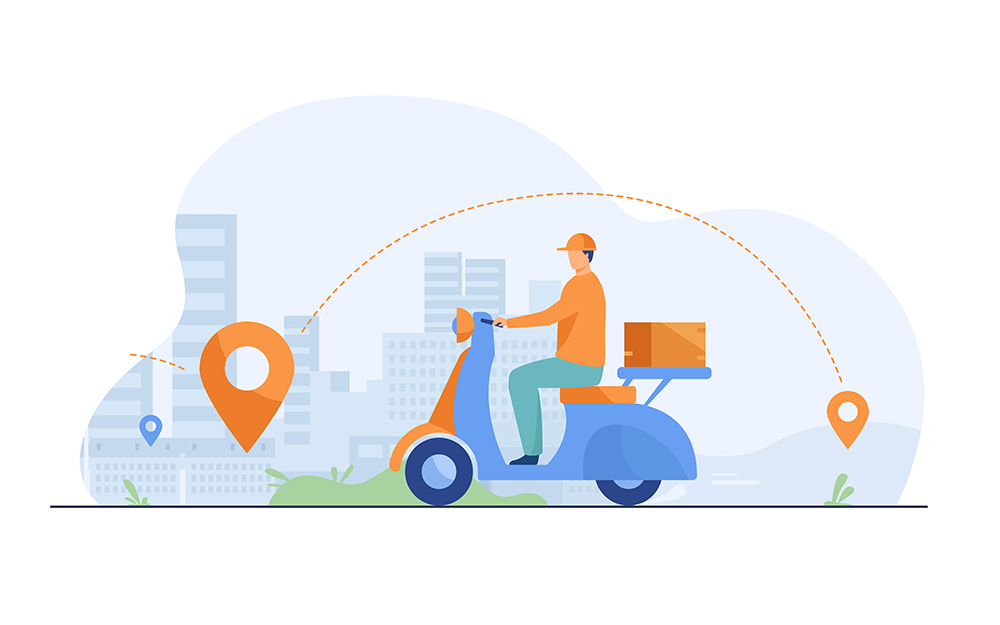
How Much Have 3rd Party Delivery Services Grown?
According to a 2017 study done by Morgan Stanley Research, delivery transactions made up roughly six percent of total United States restaurant sales, with estimates said to reach nearly 40 percent of all restaurant sales by 2020 (Collison). Looking at the graph below with data provided by McKinsey and Morgan Stanley, its easy to see that the United States food delivery revenue has been growing exponentially since 2015. However, even with restaurant owners saving money and cutting costs, all these things were never enough to offset the expense of using some 3rd party delivery services. Andy Taylor, C.E.O. of Ando, also takes the same stance on these different food delivery services stating, "I don't think a pure delivery model can be profitable" (Dunn). Unlike larger chains where these companies can afford to undertake such 3rd party delivery services as well as compromising on certain pricing. Those of smaller businesses and restaurants lack the proper leverage to negotiate fees and/or the resources to increase their sales productivity.
US Food Delivery App Revenue
How Do 3rd Party Delivery Services Affect The Restaurant Industry?
To restaurant owners such as Michelle Gauthier, owner and operator of Mulberry & Vine, these 3rd party delivery services are having a crippling effect on restaurants and their employees. As Gauthier directly states in How Delivery Apps May Put Your Favorite Restaurant Out Of Business, "We know for a fact that as delivery increases, our profitability decreases" (Dunn). Also going as far as stating, "I think it's a far bigger problem than a lot of operators realize. I think we are losing money on delivery orders, or, best-case scenario, breaking even" (Dunn). This should be alarming to restaurant owners who use these different 3rd party delivery services as they end up taking a huge majority of the total profits.
Furthermore, in The True Cost of Convenience, the author explains that as these companies began to raise hundreds of millions of dollars in revenue, they began decreasing the cost of food and increasing the fees for their services. As the author directly states, "They subsidized the 'true' cost of delivery, making it cheap for consumers while squeezing restaurants with high fees and pocketing courier tips" (Sharma). This shows that these 3rd party delivery service companies have little interest in mind when working with different restaurants and their overall profitability. Rather than focusing attention towards helping those in the restaurant industry, they focus on non-restaurant-friendly models in which the businesses who need these services are extremely concerned.
How Much Do 3rd Party Delivery Services Make Compared To Restaurants?
In Viral post raises questions about how much restaurants earn from delivery apps, the author discusses an April 2020 post made by the owner of Chicago Pizza Boss. Giuseppe Badalamenti, the owner of Chicago Pizza Boss, explains how his restaurant brought in about $1,042.63 worth of orders during the month of March 2020. However, this restaurant ended up only pocketing roughly $376.54 after various fees were deducted. Badalamenti went on to state that those who use delivery services should, "stop believing you are supporting your community by ordering from a 3rd party delivery company" (Callahan). In other words, restaurants, such as that of Chicago Pizza Boss, are suffering heavily as 3rd party delivery services are taking a huge majority of the revenue through fees and commissions, basically leaving these them with nothing. This can be particularly harmful to restaurants, especially full service restaurants, considering they tend to have a profit margin that falls between 3 to 5 percent (Resendes).
But do these companies really pull in as much as restaurant owners say they are? According to the author, "A representative for Grubhub confirmed the statement's authenticity and then broke down the various costs for TODAY, saying that while most of its restaurant partners end up paying between 15-25% in fees, this particular business opted to have $231 deducted from its profits to apply towards promotions, which are optional sales coupons a restaurant may offer customers." (Callahan). In other words, after the promotional fee was deducted, this restaurant would have been left with only about 40% of the total sales. And even if the promotional fee was never deducted, the restaurant would only have made about 63% of the original sales.

Resources
https://upserve.com/restaurant-insider/profit-margins/
https://web.stanford.edu/~leinav/teaching/Collison.pdf
https://www.businessofapps.com/data/food-delivery-app-market/
https://www.eater.com/22228352/convenience-of-delivery-apps-destroying-restaurants-uber-eats-doordash-postmates
https://www.newyorker.com/culture/annals-of-gastronomy/are-delivery-apps-killing-restaurants
https://www.today.com/food/viral-post-raises-questions-about-how-much-restaurants-earn-delivery-t180675